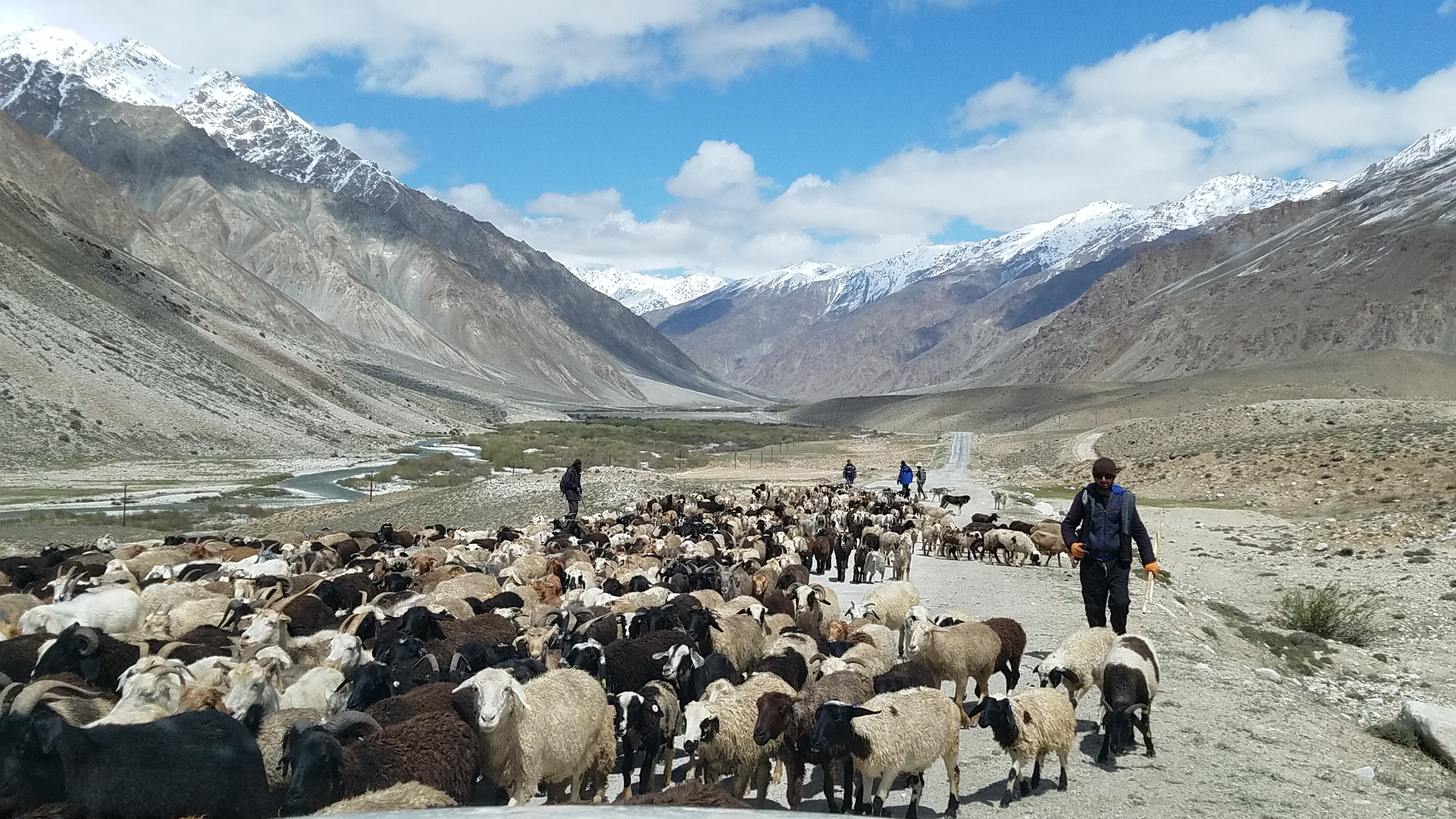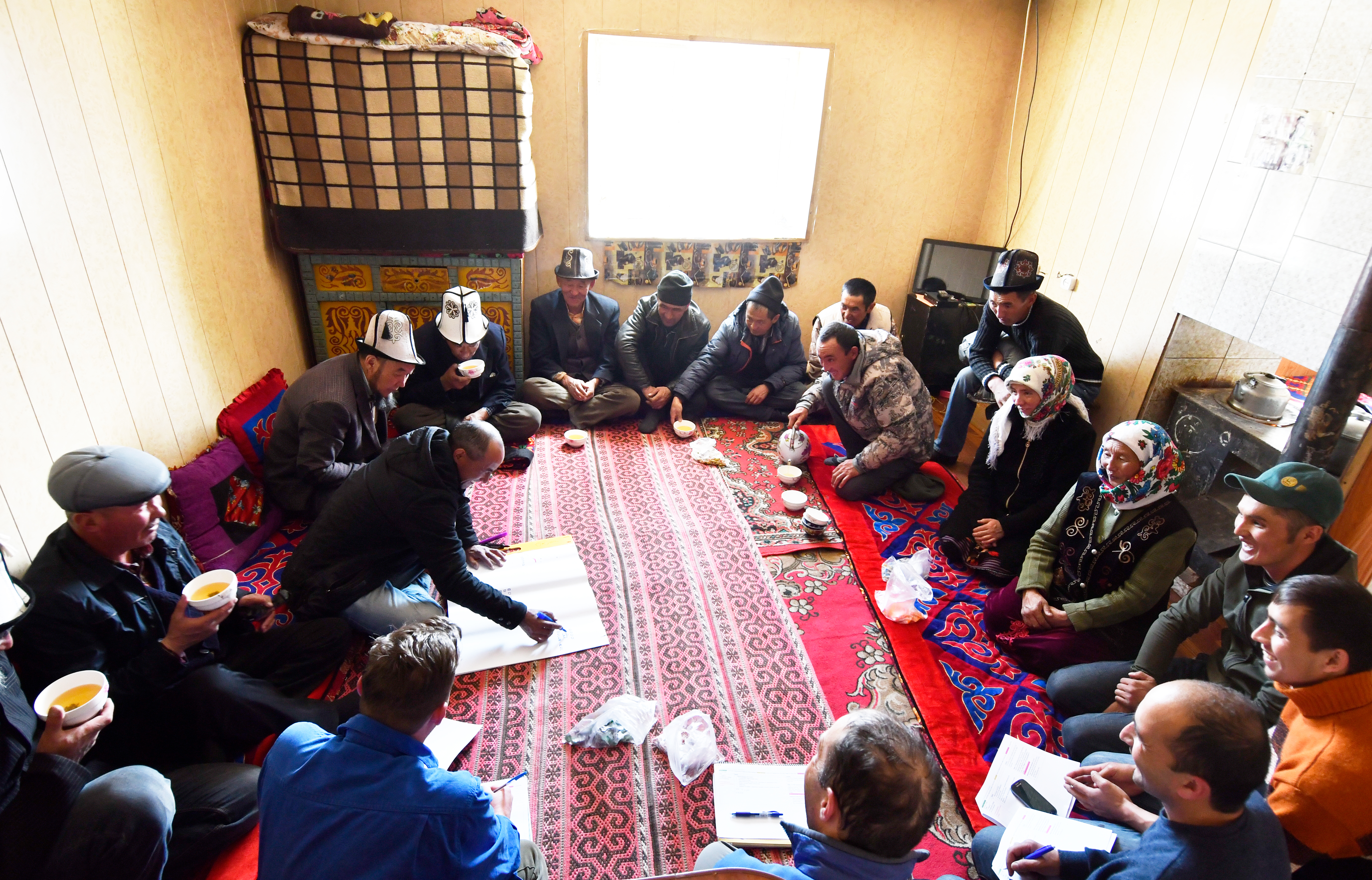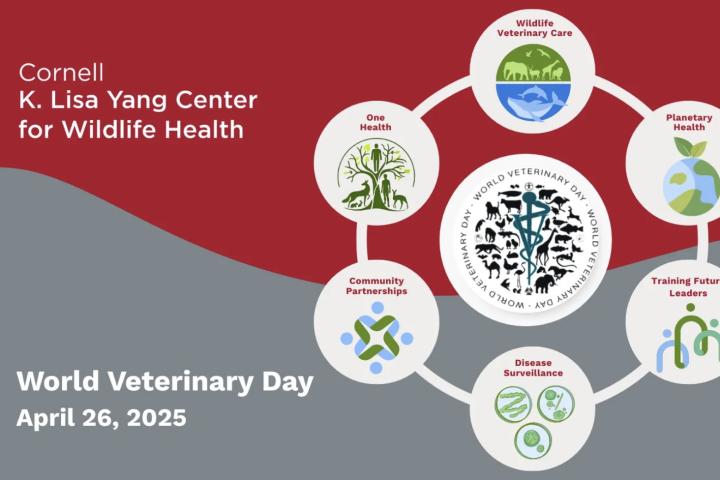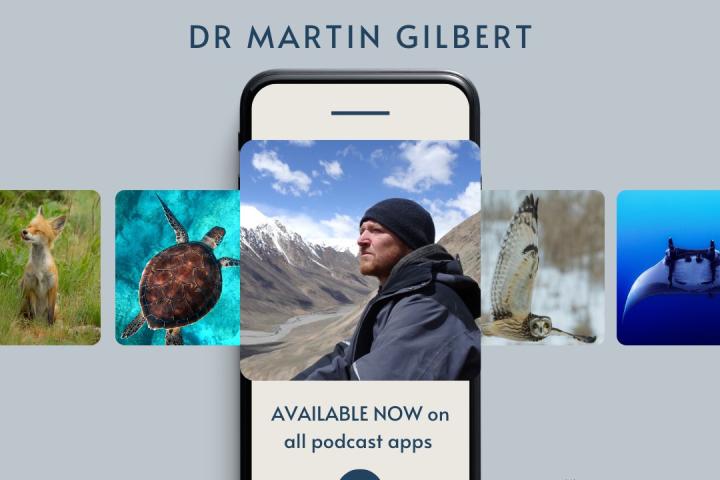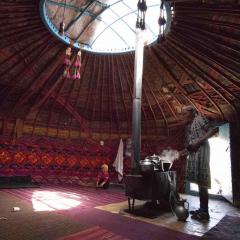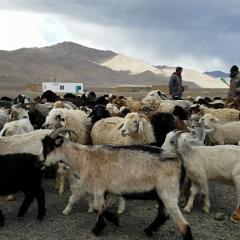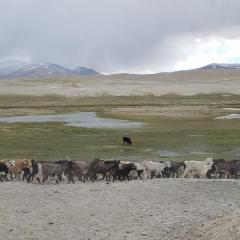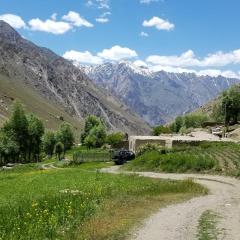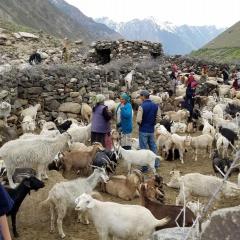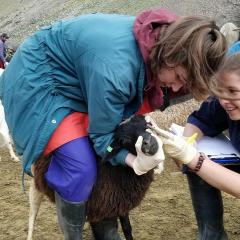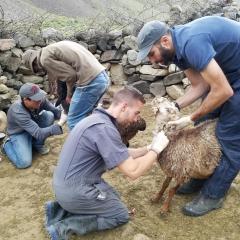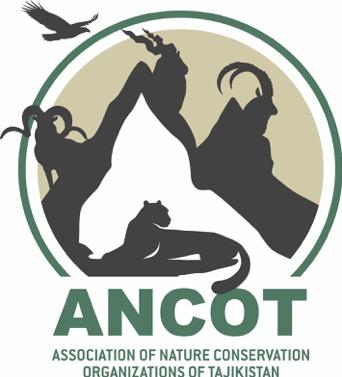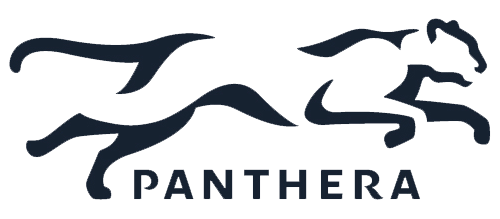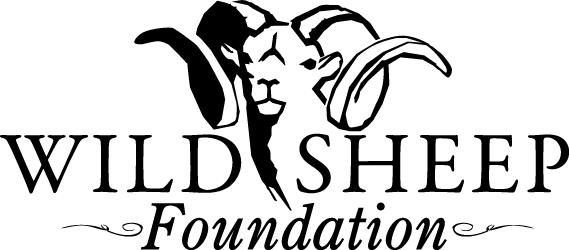Snow Leopards and Local Communities
Healthy coexistence for people and wildlife on the ‘Roof of the World’
The Pamir Mountains of Tajikistan support a fragile ecosystem of limited resources shared by unique wildlife and a distinctive livestock herding culture. These rugged landscapes are also home to the enigmatic and elusive snow leopard. The survival of this highly threatened cat depends on the abundance of wild ungulate prey species such as Siberian ibex and Marco Polo sheep. These wild goat and sheep species live alongside herds of their domestic cousins, which compete with them for food while potentially sharing many infectious diseases. In these sparsely resourced environments, the scales of sustainability are very finely balanced, and even minor shifts in exploitation can be catastrophic for both people and wildlife. We are working with Pamir communities to find more environmentally sensitive ways of rearing livestock and improving animal health and productivity to maximize income, while reducing livestock's environmental footprint.
Disease and Over-Grazing Threaten Wildlife
Traditionally, a lack of alternative income sources has incentivized communities to increase livestock numbers to the limits of available grazing. This intensifies competition and places severe nutritional and physiological pressures on domestic sheep and goats as well as wild ungulates, while also increasing contact at the livestock-wildlife interface that in turn encourages the transmission of infections. Disease outbreaks are common among both wild and domestic animals, impacting the livelihoods of local communities and increasing mortality in wild ungulate herds. In some areas people also take a utilitarian approach to wildlife, with unsustainable poaching of wild ungulates further reducing their numbers. Deprived of their wild prey, snow leopards may resort to hunting domestic animals, leading to conflict and retaliation as herders act to protect their flocks.
Only by recognizing the rights of both people and wildlife to flourish and thrive can we ensure a future for the snow leopard.
Community-Based Solutions
Recognizing that traditional land-use practices were failing to meet the income needs of herding communities and were degrading mountain pastures for both livestock and wildlife, local communities began to organize around a new approach for landscape management. In 2008, the Government of Tajikistan began allocating areas to be managed as community-based conservancies, where local cooperatives would be responsible for protecting their wildlife in return for income from ecotourism and carefully-managed hunting. Wildlife-generated revenues could then be used to support the work of rangers and guides employed by the conservancy, with surpluses invested into local development projects. This approach has proven very successful and protection has led to a resurgence in wild ungulate numbers on conservancy land, followed by a gradual recovery of snow leopard numbers.
Community support for the conservancies is integral to maintaining the growth of wildlife populations. Although the conservancies generate substantial revenues for the communities as a whole, livestock remain the primary source of income at the household level. Alternative livelihood options are limited in these remote communities, and so giving-up herding is not an option. But livestock grow slowly on poor quality pastures, with animals needing extra years to reach a saleable weight. Longer rearing times leads to larger herds and a greater risk of mortality, which further incentivizes owners to increase numbers as an insurance against expected losses. More livestock exerts greater pressure on wildlife, threatening the very resource that drives the success of the conservancies. By working with conservancy members to develop veterinary support systems focused on producing healthier, fitter animals, we can reduce rearing times and increase profitability to simultaneously benefit local people and wildlife.
Health Solutions for Communities and Wildlife
We are working with the community-based conservancies of Burgut and Parcham in Tajikistan’s Gorno-Badakhshan region to understand the challenges and opportunities faced by livestock herders. Our multi-disciplinary teams combine representation from local communities, national government agencies, and international experts– including veterinarians, socio-economists, and wildlife managers, with students working alongside experienced professionals. Together, we explore the importance of various livestock products to household income and subsistence, and conduct detailed assessments of the health and management of livestock herds. By expanding our analysis to cover the entire livestock product value chain (from producers, processors, and traders all the way to consumers), we are working to identify opportunities for community members to increase their profits or tap into new markets that diversify their income streams.
As the results of our surveys are compiled they are presented in full to the community members, and together we work to identify interventions that are locally acceptable, improve the health and productivity of their animals, increase income opportunities, and reduce the impact of livestock on wild ungulate populations. Interventions can include the introduction of vaccination against important diseases, improved access to veterinary care and medicines, adjustments to husbandry and/or grazing management strategies, changes to marketing approaches, as well as the development of new products to meet untapped consumer needs and interests. Although the outlook is positive, we are aware that even well-intentioned interventions can have unintended consequences, with better veterinary care or market opportunities leading to greater numbers of livestock on the pastures. To avoid this, our interventions are provided through community agreements that place limits on livestock numbers, which are monitored on an annual basis. The finances required to support interventions are provided by the conservancies themselves, from funds derived from wildlife-generated income. This positive feedback loop uses money generated through wildlife tourism to improve animal health and reduce numbers of livestock, benefiting local living standards, while promoting the recovery of mountain ungulate populations– and thus the snow leopards that depend on them.

